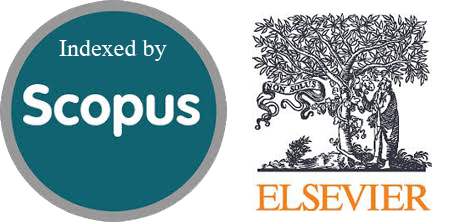Comparative Study of Earthquake Clustering in Indonesia Using K-Medoids, K-Means, DBSCAN, Fuzzy C-Means and K-AP Algorithms
Abstract
Indonesia’s frequent earthquakes, caused by its position at the convergence of multiple tectonic plates, Indonesia's frequent earthquakes, caused by its position at the convergence of multiple tectonic plates, necessitate precise seismic zone identification to improve disaster preparedness. This research evaluates the effectiveness of five clustering algorithms—K-Medoids, K-Means, DBSCAN, Fuzzy C-Means, and K-Affinity Propagation (K-AP)—for analyzing earthquake data from January 2017 to January 2023. Using a dataset from BMKG encompassing 13,860 seismic events, each algorithm was assessed based on Silhouette Score and Cluster Purity metrics. Results indicated that K-Means provided the best balance, forming six clusters with a Silhouette Score of 0.3245 and Cluster Purity of 0.7366, making it the most suitable for seismic zone analysis. K-Medoids closely followed with a Silhouette Score of 0.3158 and Cluster Purity of 0.7190. Although DBSCAN effectively handled noise, its negative Silhouette values indicated poor clustering quality. Fuzzy C-Means and K-AP underperformed, with K-AP generating an impractically high number of clusters (196) and the lowest Silhouette Score (0.2550). This study offers a novel, comprehensive comparison of clustering algorithms for Indonesian earthquake data, emphasizing a dual-metric evaluation approach. By identifying K-Means as the most effective algorithm, provides valuable insights for disaster mitigation and seismic risk analysis.
Downloads
References
F. R. Senduk, Indwiarti, and F. Nhita, “Clustering of Earthquake Prone Areas in Indonesia Using K-Medoids Algorithm,” Indones. J. Comput., vol. 4, no. 3, pp. 65–76, 2019, doi: 10.21108/indojc.2019.4.3.359.
A. Jufriansah, Y. Pramudya, A. Khusnani, and S. Saputra, “Analysis of Earthquake Activity in Indonesia by Clustering Method,” J. Phys. Theor. Appl., vol. 5, no. 2, p. 92, 2021, doi: 10.20961/jphystheor-appl.v5i2.59133.
M. N. Shodiq, D. H. Kusuma, M. G. Rifqi, A. R. Barakbah, and T. Harsono, “Neural Network for Earthquake Prediction Based on Automatic Clustering in Indonesia,” Int. J. Informatics Vis., vol. 2, no. 1, pp. 37–43, 2018, doi: 10.30630/joiv.2.1.106.
M. Muhajir and N. N. Sari, “K-Affinity Propagation (K-AP) and K-Means Clustering for Classification of Earthquakes in Indonesia,” in Proceeding - 2018 International Symposium on Advanced Intelligent Informatics: Revolutionize Intelligent Informatics Spectrum for Humanity, SAIN 2018, IEEE, 2018, pp. 6–10. doi: 10.1109/SAIN.2018.8673344.
B. A. P. Martadiputra, D. Rachmatin, and A. S. Hidayat, “Analysis of Characteristics of Earthquake Area in Indonesia in 2020 with Cluster Analysis as Natural Disaster,” Int. J. Sci. Res., vol. 9, no. 11, pp. 1243–1250, doi: 10.21275/SR201122121148.
M. N. Shodiq, A. Ridho Barakbah, and T. Harsono, “Spatial Analysis of Earthquake Distribution with Automatic Clustering for Prediction of Earthquake Seismicity in Indonesia,” in The Forurth Indonesian-Japanese Conference on Knowledge Creation dan Intelegent Computing (KCIC) 2015, pp. 47–55.
A. Sabtaji, “Statistics of Tectonic Earthquake Events Each Proovince in Indonesia Territory for 11 Years of Observation (2009-2019).”
Prihandoko, Bertalya, and M. I. Ramadhan, “An Analysis of Natural Disaster Data by Using K-Means and K-Medoids Algorithm of Data Mining Techniques,” in 2017 15th International Conference on Quality in Research (QiR) : International Symposium on Electrical and Computer Engineering, Nusa Dua, Bali, Indonesia: IEEE, Jul. 2017, pp. 221–225. doi: 10.1109/QIR.2017.8168485.
P. Novianti, D. Setyorini, and U. Rafflesia, “K-Means Cluster Analysis in Earthquake Epicenter Clustering,” Int. J. Adv. Intell. Informatics, vol. 3, no. 2, pp. 81–89, doi: 10.26555/ijain.v3i2.100.
A. Ahmad and N. Irsalinda, “Cluster Analysis of Earthquake’s Data Clustering in Indonesia using Fuzzy K-means Clustering,” in Proceeding International Conference on Science and Engineering, pp. 3–7. doi: 10.14421/icse.v3.457.
M. Nishom, S. F. Handayani, and D. Dairoh, “Pillar Algorithm in K-Means Method for Identification Health Human Resources Availability Profile in Central Java,” JUITA J. Inform., vol. 9, no. 2, p. 145, 2021, doi: 10.30595/juita.v9i2.9860.
A. Kusmiran, “Clustering and Risk Analysis of The Earthquake in Sulawesi Using Mini Batch K-Means, K-Medoids, and Maximum Likelihood Method,” Elkawnie J. Islam. Sci. Technol., vol. 9, no. 1, pp. 1–23, doi: 10.22373/ekw.v8i2.13027.
R. Adolph, “Analysis of Seismic Data Using Partition-Based Clustering Techniques,” in 2022 IEEE Global Conference on Computing, Power and Communication Technologies (GlobConPT), New Delhi, India, 2022, pp. 1–6. doi: 10.1109/GlobConPT57482.2022.9938362.
A. Ashabi, S. Bin Sahibuddin, and M. S. Haghighi, “The Systematic Review of K-Means Clustering Algorithm,” in ICNCC ’20: Proceedings of the 2020 9th International Conference on Networks, Communication and Computing, pp. 13–18. doi: https://doi.org/10.1145/3447654.3447657.
I. H. Rifa, H. Pratiwi, and Respatiwulan, “Implementasi Algoritma Clara untuk Data Gempa Bumi di Indonesia,” in Seminar Nasional Penelitian Pendidikan Matematika (SNP2M), 2019, pp. 161–166. doi: http://dx.doi.org/10.31000/cpu.v0i0.1694.
H. V. Singh, A. Girdhar, and S. Dahiya, “A Literature survey based on DBSCAN algorithms,” in 2022 6th International Conference on Intelligent Computing and Control Systems (ICICCS), Madurai, India: IEEE, May 2022, pp. 751–758. doi: 10.1109/ICICCS53718.2022.9788440.
Mustakim, E. Rahmi, M. R. Mundzir, S. T. Rizaldi, Okfalisa, and I. Maita, “Comparison of DBSCAN and PCA-DBSCAN Algorithm for Grouping Earthquake Area,” in 2021 International Congress of Advanced Technology and Engineering (ICOTEN), IEEE, Jul. 2021, pp. 1–5. doi: 10.1109/ICOTEN52080.2021.9493497.
Mustakim, M. Z. Fauzi, Mustafa, A. Abdullah, and Rohayati, “Clustering of Public Opinion on Natural Disasters in Indonesia Using DBSCAN and K-Medoids Algorithms,” J. Phys. Conf. Ser., vol. 1783, no. 1, p. 012016, Feb. 2021, doi: 10.1088/1742-6596/1783/1/012016.
R. R. Arista, R. A. Asmara, and D. Puspitasari, “Pengelompokan Kejadian Gempa Bumi Menggunakan Fuzzy C-Means Clustering,” J. Teknol. Inf. dan Terap., vol. 4, no. 2, pp. 103–110, Apr. 2019, doi: 10.25047/jtit.v4i2.67.
B. Tavakkol and Y. Son, “Fuzzy Kernel K-Medoids Clustering Algorithm for Uncertain Data Objects,” Pattern Anal. Appl., vol. 24, no. 3, pp. 1287–1302, Aug. 2021, doi: 10.1007/s10044-021-00983-z.
M. N. Bangun, O. Darnius, and S. Sutarman, “Optimization Model in Clustering The Hazard Zone After an Earthquake Disaster,” Sink. J. dan Penelit. Tek. Inform., vol. 7, no. 3, pp. 2089–2095, Aug. 2022, doi: 10.33395/sinkron.v7i3.11598.
I. H. Rifa, H. Pratiwi, and R. Respatiwulan, “Clustering of Earthquake Risk in Indonesia Using K-Medoids and K-Means Algorithms,” Media Stat., vol. 13, no. 2, pp. 194–205, Dec. 2020, doi: 10.14710/medstat.13.2.194-205.
N. Dwitiyanti, S. Ayu Kumala, and S. Dwi Handayani, “Implementation of K-Means Method in Classterization of Earthquake Prone Areas in Indonesia,” Pros. Semin. Nas. UNIMUS, vol. 6, pp. 1029–1037, 2023.
C. Shah and A. Jivani, “Comparison of data mining clustering algorithms,” in 2013 Nirma University International Conference on Engineering (NUiCONE), IEEE, Nov. 2013, pp. 1–4. doi: 10.1109/NUiCONE.2013.6780101.
R. Refianti, A. B. Mutiara, A. Juarna, and S. N. Ikhsan, “Analysis and Implementation of Algorithm Clustering Affinity Propagation and K-Means at Data Student Based On GPA and Duration of Bachelor-Thesis Completion,” J. Theor. Appl. Inf. Technol., vol. 35, no. 1, pp. 69–76.
M. Tanzil Furqon and L. Muflikhah, “Clustering The Potential Risk of Tsunami Using Density-Based Spatial Clustering of Application with Noise (DBSCAN),” J. Environ. Eng. Sustain. Technol., vol. 3, no. 1, pp. 1–8, Jul. , doi: 10.21776/ub.jeest.2016.003.01.1.
S. Augustine and S. Augustine, “Comparative Performance Analysis of Clustering Techniques in Educational,” IADIS Int. J. Comput. Sci. Inf. Syst., vol. 10, no. 2, pp. 65–78, 2015.
J. Han, M. Kamber, and J. Pei, Data Mining. Elsevier, 2012. doi: 10.1016/C2009-0-61819-5.
A. Kristianto, E. Sediyono, and K. D. Hartomo, “Implementation DBSCAN Algorithm to Clustering Satellite Surface Temperature Data in Indonesia,” Regist. J. Ilm. Teknol. Sist. Inf., vol. 6, no. 2, pp. 109–118, 2020, doi: 10.26594/register.v6i2.1913.
C. S. Putra, “Usulan penelitian dosen pemula,” no. Anggota 1, pp. 1–27, 2015.
Y. Lu, T. Ma, C. Yin, X. Xie, W. Tian, and S. M. Zhong, “Implementation of the Fuzzy C-Means Clustering Algorithm in Meteorological Data,” Int. J. Database Theory Appl., vol. 6, no. 6, pp. 1–18, 2013, doi: 10.14257/ijdta.2013.6.6.01.
X. Zhang, W. Wang, and K. Nørv, “K-AP : Generating Specified K Clusters by Efficient Affinity Propagation K -AP : Generating Specified K Clusters by Efficient Affinity Propagation,” no. December, 2010, doi: 10.1109/ICDM.2010.107.
D. F. Pramesti, Lahan, M. Tanzil Furqon, and C. Dewi, “Implementasi Metode K-Medoids Clustering Untuk Pengelompokan Data,” J. Pengemb. Teknol. Inf. dan Ilmu Komput., vol. 1, no. 9, pp. 723–732, doi: 10.1109/EUMC.2008.4751704.
M. Bariklana and A. Fauzan, “Implementation of The DBSCAN Method for Cluster Mapping of Earthquake Spread Location,” BAREKENG J. Math. Its Appl., vol. 17, no. 2, pp. 867–878, 2023.
A. Kusmiran, “Clustering and Risk Analysis Of The Earthquake in Sulawesi Using Mini Batch K-Means , K-Medoids, and Maximum Likelihood Method,” J. Islam. Sci. Technol., vol. 9, no. 1, pp. 1–23, 2023, doi: 10.22373/ekw.v9i1.13027.
A. Prasetio, M. M. Effendi, and M. N. Dwi M, “Analisis Gempa Bumi Di Indonesia Dengan Metode Clustering,” Bull. Inf. Technol., vol. 4, no. 3, pp. 338–343, Sep. 2023, doi: 10.47065/bit.v4i3.820.
Copyright (c) 2024 Jurnal RESTI (Rekayasa Sistem dan Teknologi Informasi)

This work is licensed under a Creative Commons Attribution 4.0 International License.
Copyright in each article belongs to the author
- The author acknowledges that the RESTI Journal (System Engineering and Information Technology) is the first publisher to publish with a license Creative Commons Attribution 4.0 International License.
- Authors can enter writing separately, arrange the non-exclusive distribution of manuscripts that have been published in this journal into other versions (eg sent to the author's institutional repository, publication in a book, etc.), by acknowledging that the manuscript has been published for the first time in the RESTI (Rekayasa Sistem dan Teknologi Informasi) journal ;








